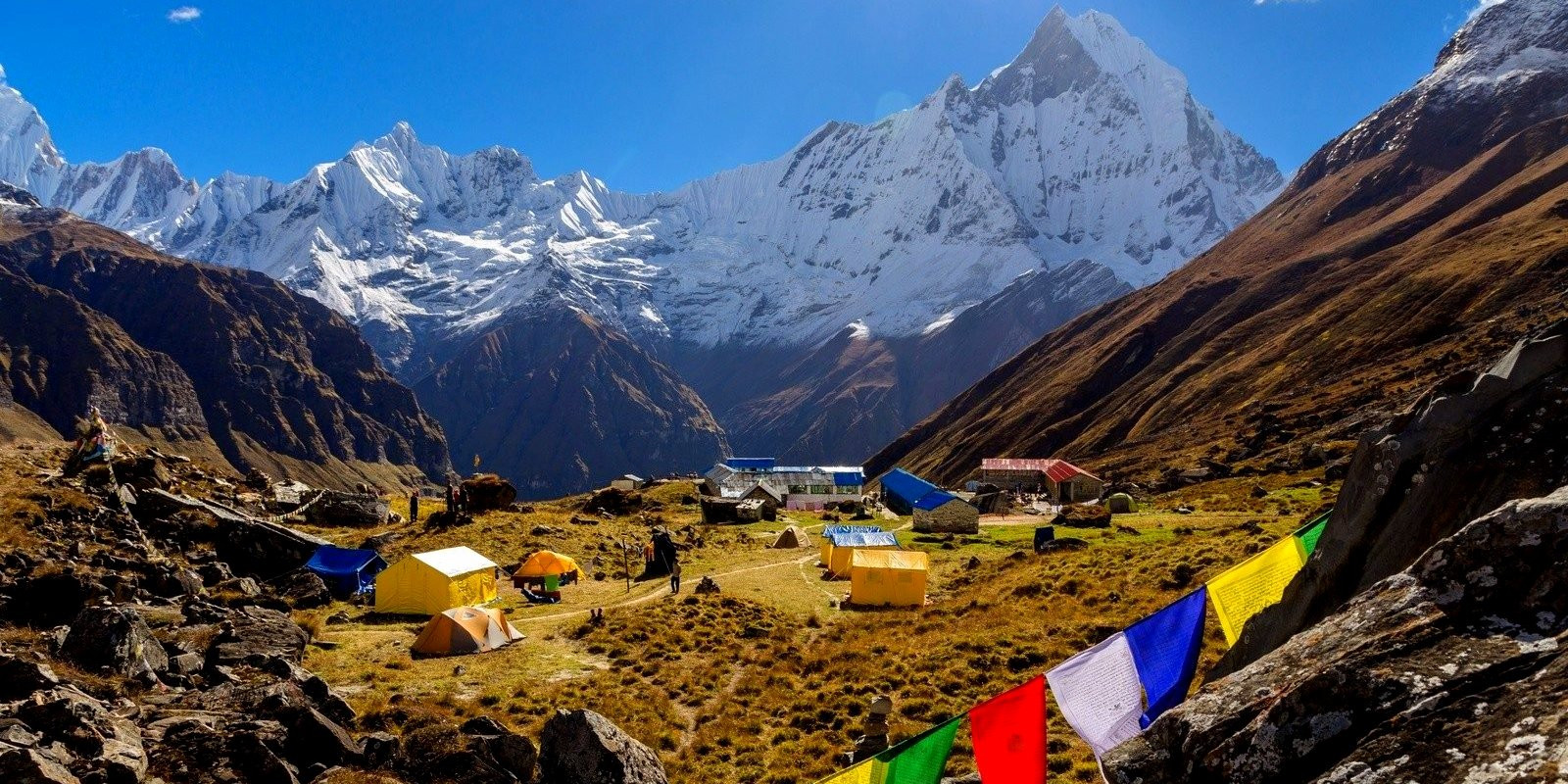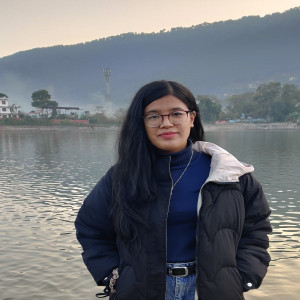Everest Base Camp Trek
The Everest Base Camp Trek is one of the most iconic and sought-after hiking experiences in the world, offering adventurers the unique opportunity to stand at the foot of the world's highest peak, Mount Everest (Sagarmatha in Nepali). This trek not only challenges hikers physically but also immerses them in the rich culture of the Khumbu region, home to the famous Sherpa people.
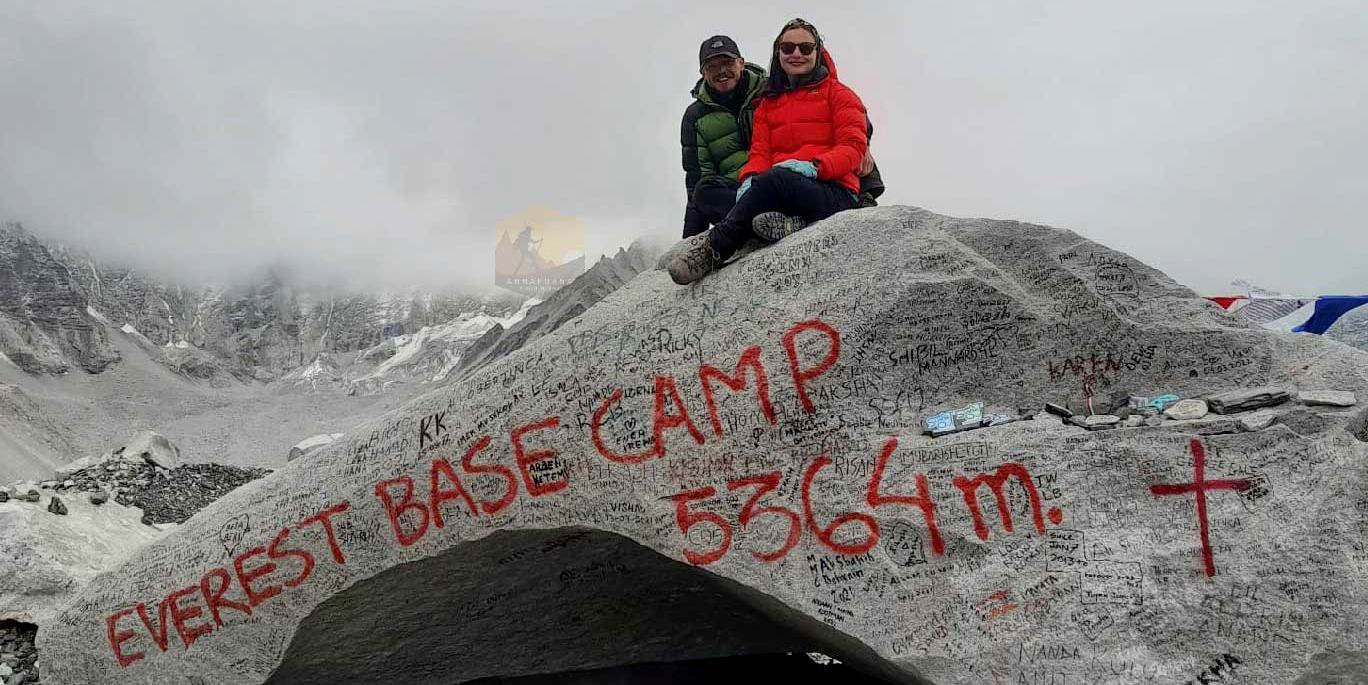
Key Features of the Everest Base Camp Trek
-
Duration and Route: The trek usually takes about 12 to 14 days, starting from Lukla after a short flight from Kathmandu. The standard route passes through Phakding, Namche Bazaar, Tengboche, Dingboche, Lobuche, and Gorak Shep before reaching Everest Base Camp. The return route often includes a climb to Kala Patthar for panoramic views of Everest and nearby peaks.
-
Altitude: The trek reaches its highest point at Kala Patthar, at about 5,545 meters (18,192 ft), with Everest Base Camp itself at 5,364 meters (17,598 ft).
-
Physical Difficulty: It is considered a moderate to challenging trek, primarily due to the high altitude and the length of the trek. Proper acclimatization is crucial to manage the risk of altitude sickness.
-
Best Time to Trek: The best times to undertake the Everest Base Camp Trek are during the spring (March to May) and autumn (September to November) seasons. These months provide the clearest skies and the most stable weather conditions.
-
Cultural Experience: Trekkers pass through Sherpa villages and Buddhist monasteries, gaining insight into the local culture and religious practices. Namche Bazaar, the gateway to the high Himalayas, offers museums, cafes, and stunning views, serving as a cultural hub of the region.
-
Scenic Highlights: The trek is famed for its spectacular scenery, including views of Everest, Lhotse, Nuptse, and Ama Dablam, among others. The trail meanders through alpine forests, glacial rivers, and high-altitude landscapes dotted with vibrant prayer flags.
What to Expect
-
Accommodation and Meals: The trek is well-supported with a range of teahouses offering basic to comfortable accommodations and meals. These teahouses provide a cozy place to rest and meet other trekkers.
-
Permits and Regulations: All trekkers need a TIMS (Trekkers' Information Management Systems) card and a Sagarmatha National Park permit. These can be arranged by trekking companies or independently in Kathmandu or at the entry points of the trek.
-
Guides and Porters: While it is possible to do the trek independently, hiring a guide and porter through a reputable company like Relax Getaways can enhance the experience by providing local knowledge, logistical support, and assistance in case of emergencies.
The Everest Base Camp Trek is more than just a trek; it is a journey of a lifetime that offers awe-inspiring views, challenging trekking conditions, and profound cultural interactions in one of the most spectacular settings on earth. Whether you are an experienced trekker or a novice eager to test your limits, this trek promises memories that will last a lifetime.
Annapurna Circuit Trek
The Annapurna Circuit Trek is a classic trek that loops around the Annapurna massif, offering a magnificent variety of landscapes, cultures, and experiences. Known for its breathtaking scenery and cultural diversity, this trek is one of the most popular and rewarding hiking experiences in Nepal.
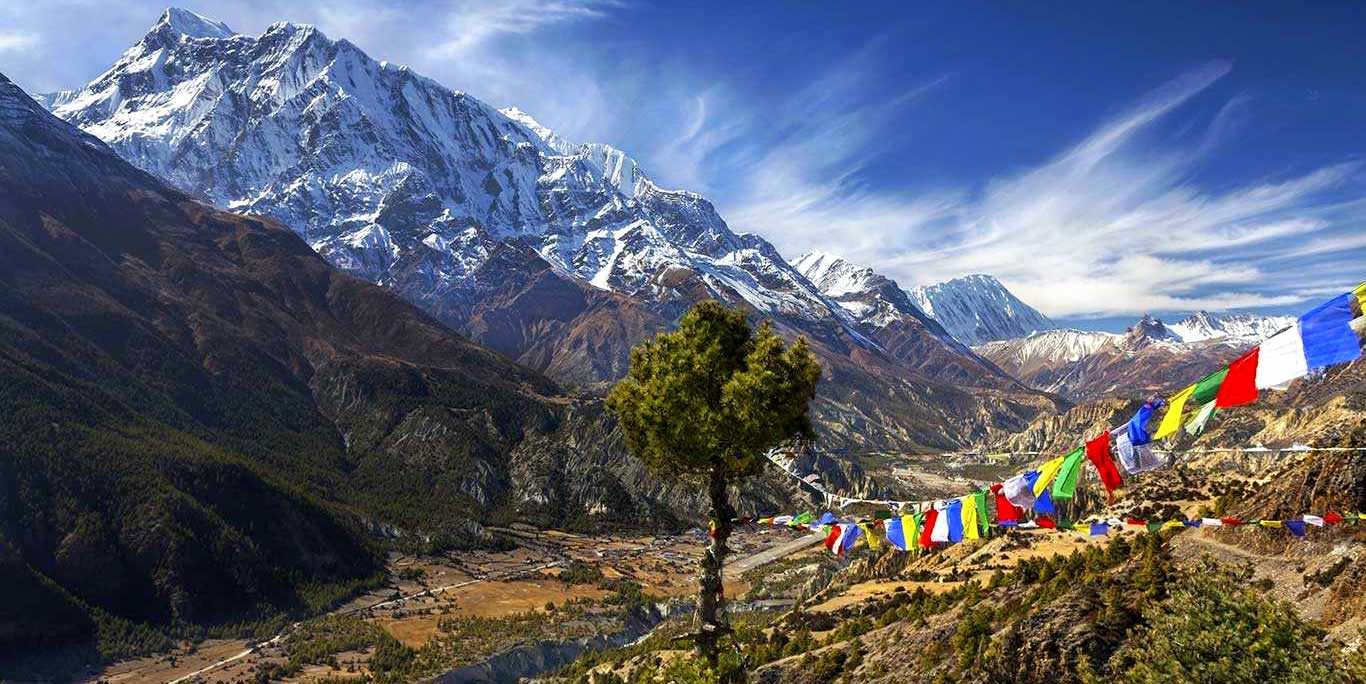
Key Features of the Annapurna Circuit Trek
-
Duration and Route: Typically, the trek takes about 17 to 21 days, starting from Besi Sahar or Bhulbhule in the Marsyangdi Valley and concluding in the Kali Gandaki Gorge, the world’s deepest. The route climbs to the high point at Thorong La Pass (5,416 meters or 17,769 feet) before descending to Muktinath and continuing down to Jomsom or extending further to Tatopani and Pokhara.
-
Altitude: The highest point is Thorong La Pass at 5,416 meters, which requires careful acclimatization to avoid altitude sickness.
-
Physical Difficulty: This trek is considered moderate to challenging, suitable for well-prepared trekkers due to its length and the high altitude of the pass.
-
Best Time to Trek: The prime seasons are spring (March to May) and autumn (September to November). These months feature clear skies and relatively stable weather, offering the best conditions for trekking.
-
Cultural Experience: The trek passes through diverse ethnic communities, including Gurung, Manangi, and Thakali villages, providing trekkers with the opportunity to experience Nepal's rich cultural tapestry. The route also features ancient monasteries, traditional tea houses, and vibrant prayer flags.
-
Scenic Highlights: The Annapurna Circuit offers stunning views of Annapurna, Dhaulagiri, Machapuchare (Fishtail Mountain), Manaslu, Gangapurna, and Tilicho Peak. The trek traverses lush subtropical forests, arid cliffs, and high mountain landscapes.
What to Expect:
Accommodation and Meals: The Circuit is well-equipped with guesthouses and teahouses along the route, providing opportunities to enjoy local hospitality and cuisine.
Permits and Regulations: Trekkers require an Annapurna Conservation Area Permit (ACAP) and a TIMS card. These can be arranged easily through trekking agencies or independently in major cities like Kathmandu and Pokhara.
Guides and Porters: While many experienced trekkers choose to do the Circuit independently, hiring a guide or porter can enhance the experience by providing additional safety, local knowledge, and logistical support.
Connectivity and Extensions: The trail is connected with many side trails and extensions, such as the Tilicho Lake, the world's highest lake, and the newly opened Nar Phu Valley, which offers a glimpse into secluded Tibetan cultures.
The Annapurna Circuit Trek not only challenges trekkers physically but also engages them spiritually, offering a profound connection to nature and a deeper understanding of the diverse cultural heritage of Nepal. It remains a must-do for avid trekkers around the world due to its stunning natural beauty and its enriching cultural encounters.
Manaslu Circuit Trek
The Manaslu Circuit Trek is a remarkable journey around the eighth highest mountain in the world, Mt. Manaslu, offering an off-the-beaten-path experience that has risen in popularity due to its remote beauty and cultural authenticity. This trek provides a quieter alternative to the more trafficked trails in Nepal, yet it offers an equally stunning array of landscapes and cultural diversity.
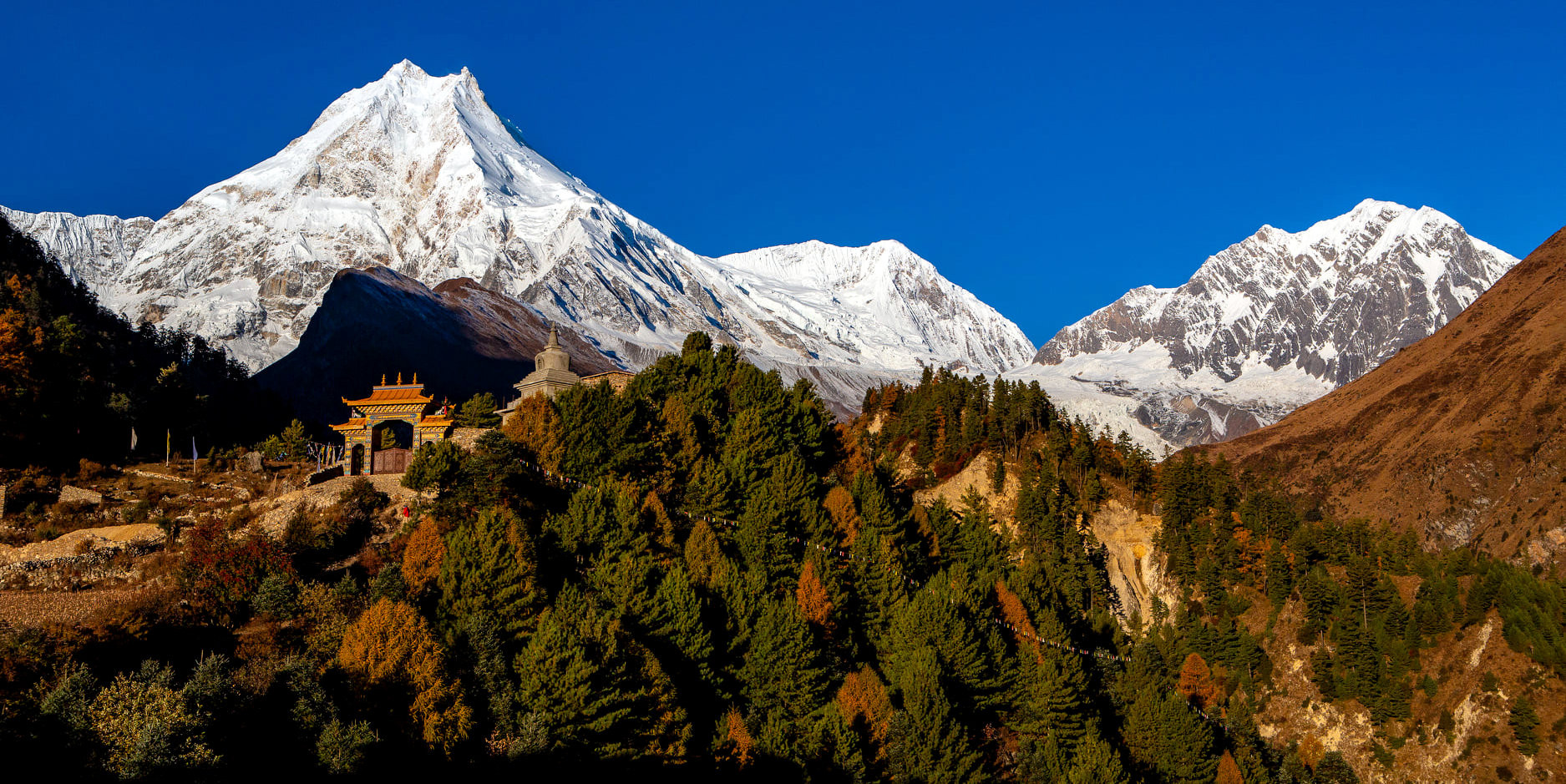
Key Features of the Manaslu Circuit Trek
-
Duration and Route: Typically completed in about 14 to 18 days, the trek starts from Soti Khola and follows the Budhi Gandaki River through lush forests and rural villages before ascending to the high point at Larkya La Pass (5,106 meters or 16,752 feet). The circuit concludes as it joins the Annapurna Circuit route briefly at Dharapani.
-
Altitude: The highest point, Larkya La Pass, offers panoramic views of the Manaslu range and other Himalayan giants, necessitating careful acclimatization.
-
Physical Difficulty: This trek is considered moderate to challenging, not just for its altitude but also for the physical demands of crossing the high pass and the overall length of the trek.
-
Best Time to Trek: Like most Himalayan treks, the best times to undertake the Manaslu Circuit are during the autumn (September to November) and spring (March to May) when the weather is most favorable and the skies are clearest.
-
Cultural Experience: The trek traverses through various ethnic villages, including those of the Nubri and Tsum, where ancient Buddhist traditions are still a way of life. The trail is dotted with monasteries, chortens, and mani walls, enriching the spiritual experience of the trek.
-
Scenic Highlights: Stunning views of Manaslu, Himalchuli, Ngadi Chuli, and Ganesh Himal can be seen along the trail. Diverse landscapes range from subtropical jungle at lower elevations, high-altitude landscapes, to the arid Tibetan plateau north of Larkya La.
What to Expect
-
Accommodation and Meals: The trek has seen developments in tea house accommodations in recent years, although facilities can be basic compared to more established routes. Local meals provide sustenance and a taste of Nepali cuisine along the trail.
-
Permits and Regulations: The Manaslu trek requires a Manaslu Trek permit, along with an Annapurna Conservation Area Permit (ACAP) and a Restricted Area Permit (RAP), due to its location along a sensitive border area. These are best arranged through a registered trekking agency.
-
Guides and Porters: As the trek falls within a restricted area, a licensed guide is mandatory. Most trekkers also choose to hire porters. Employing locals not only provides employment but also enhances the trekking experience with insights into the local culture and landscape.
-
Environmental and Cultural Sensitivity: As with all treks in sensitive regions, it’s important to trek responsibly. Respect local customs, manage waste properly, and maintain ecological awareness throughout your journey.
The Manaslu Circuit Trek is an excellent choice for those looking to explore a less crowded, yet equally captivating part of the Nepalese Himalayas. It offers a profound glimpse into the natural beauty and cultural richness of Nepal, making it a truly unforgettable trekking adventure.
Upper Mustang Trek
The Upper Mustang Trek offers a fascinating journey into the remote and ancient Kingdom of Mustang, also known as the "Last Forbidden Kingdom." This trek is distinct from others in Nepal due to its starkly beautiful desert landscape and the Tibetan culture that predominates in the region. The area was restricted to outsiders until 1992, preserving a way of life almost unchanged for centuries.
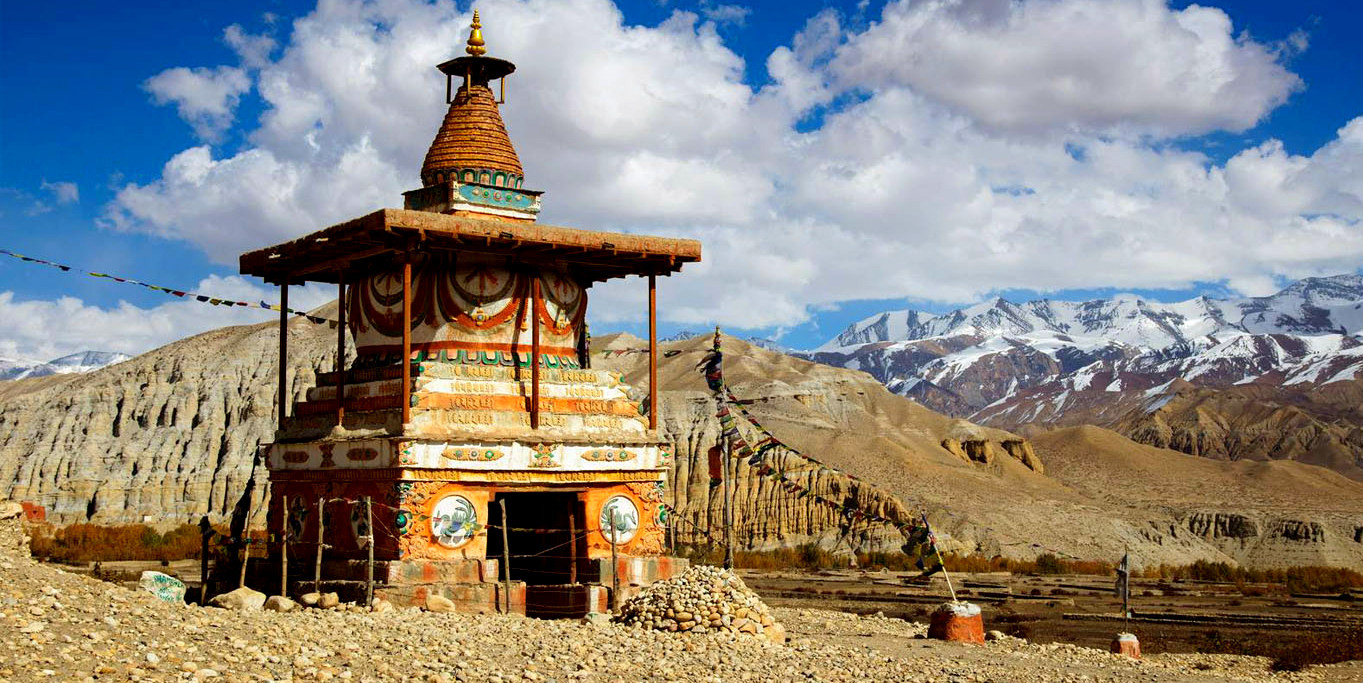
Key Features of the Upper Mustang Trek
-
Duration and Route: The trek usually takes about 10 to 14 days, starting from Jomsom after a scenic flight from Pokhara. The route progresses through Kagbeni, the gateway to Upper Mustang, and continues to Lo Manthang, the walled capital of the ancient Kingdom of Mustang.
-
Altitude: The trek does not go extremely high, typically maxing out at around 3,800 meters (12,467 feet) in Lo Manthang, which makes altitude sickness less of a concern compared to other high-altitude treks in Nepal.
-
Physical Difficulty: Considered moderate in difficulty, the trek involves some long days of walking but is less physically demanding than other high-altitude treks. The main challenge comes from the arid, windy conditions and the lack of substantial tree cover.
-
Best Time to Trek: The best times for the Upper Mustang Trek are during the late spring (May to June) and early autumn (September to October). These months avoid the snowy winter and the rainy monsoon season, providing clearer paths and better visibility.
-
Cultural Experience: Upper Mustang is a treasure trove of ancient Tibetan Buddhist art and culture. Trekkers can explore monasteries that are over a thousand years old, caves high in the cliffs, and a royal palace in Lo Manthang.
-
Scenic Highlights: The landscape in Upper Mustang is dramatically different from the lush greenery of other parts of Nepal. Expect to see arid, desert-like conditions, deep ravines, and colorful rock formations that make you feel as if you’re on another planet.
What to Expect
-
Accommodation and Meals: Accommodations are generally basic but comfortable, with guesthouses offering Nepali and Tibetan food. The facilities have improved in recent years, though options are still more limited than in more trafficked areas.
-
Permits and Regulations: The Upper Mustang Trek requires a special Upper Mustang permit due to its status as a restricted area. This permit is considerably more expensive than others in Nepal, reflecting the region's sensitive nature and the desire to limit tourism impacts.
-
Guides and Porters: A licensed guide is mandatory for this trek, and hiring porters can make the journey easier. Local guides not only enhance safety but also enrich the trek with their knowledge of local history and culture.
-
Environmental and Cultural Sensitivity: Given the delicate nature of Mustang’s ecosystem and culture, it is crucial to follow leave-no-trace principles and respect local customs and religious sites.
The Upper Mustang Trek is ideal for those interested in exploring a unique cultural enclave that has retained much of its traditional Tibetan character. It offers a markedly different experience from the lush landscapes and mountain vistas found elsewhere in Nepal, providing a fascinating glimpse into a starkly beautiful and culturally rich part of the Himalayas.
Kanchenjunga Base Camp Trek
The Kanchenjunga Base Camp Trek is a challenging and rewarding journey to the eastern part of Nepal, leading adventurers to the base camps of the world's third highest mountain, Kanchenjunga. This trek is less frequented by tourists compared to Everest or Annapurna, offering a more secluded and authentic Himalayan experience amidst some of the most stunning landscapes in the region.
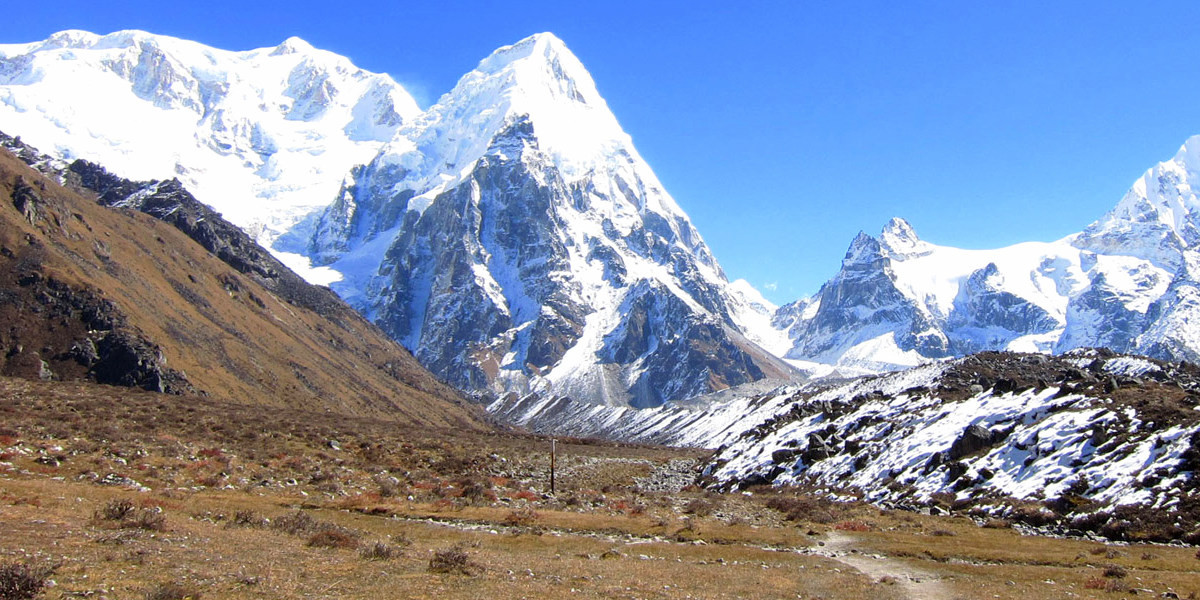
Key Features of the Kanchenjunga Base Camp Trek
-
Duration and Route: The trek typically takes about 20 to 24 days, starting from Taplejung, which is accessed by flight or a long drive from Kathmandu. The trekking route bifurcates towards either the North or South Base Camp of Kanchenjunga, with some itineraries covering both.
-
Altitude: The trek reaches its highest point at Pangpema (5,143 meters or 16,873 feet) for the North Base Camp and Ramche (4,580 meters or 15,026 feet) for the South Base Camp, demanding good physical fitness and acclimatization to high altitudes.
-
Physical Difficulty: This is considered a strenuous trek due to its length, altitude, and remote nature. The trails are less developed and require a good level of fitness and trekking experience.
-
Best Time to Trek: The ideal months to undertake the Kanchenjunga Base Camp Trek are during the spring (March to May) and autumn (September to November) seasons, when the weather is most favorable and the views are clearest.
-
Cultural Experience: The trek passes through diverse ethnic communities, including Rai and Limbu villages, offering insights into the rich cultural heritage of Nepal's eastern region. Trekkers can experience local hospitality and traditions that are distinct from those found in other parts of Nepal.
-
Scenic Highlights: The trek offers dramatic views of the massive Kanchenjunga massif, along with other Himalayan peaks like Jannu and Makalu. The route traverses lush rhododendron forests, alpine meadows, and high-altitude landscapes, offering varied and spectacular natural scenery.
What to Expect
-
Accommodation and Meals: The trek is mostly facilitated by basic teahouses and camping sites, with local meals provided. Facilities are more basic due to the trek's remoteness, so trekkers should be prepared for a rugged experience.
-
Permits and Regulations: The Kanchenjunga region requires special trekking permits because it is classified as a restricted area. Trekkers must arrange their permits through a registered trekking agency and trek in a group of at least two people with a registered guide.
-
Guides and Porters: Given the trek's challenging nature and remote location, a knowledgeable guide and porter(s) are essential for navigation, safety, and logistical support.
-
Environmental and Cultural Sensitivity: It's vital to respect local customs and maintain environmental awareness by minimizing one's ecological footprint, adhering to leave-no-trace principles throughout the trek.
The Kanchenjunga Base Camp Trek is perfect for those looking to explore remote regions without the crowds found on more popular routes. It offers an immersive experience into the natural wilderness and cultural richness of Nepal’s eastern Himalayas, making it a truly unique and unforgettable trekking adventure.
Dolpo Circuit Trek
The Dolpo Circuit Trek is an extraordinary journey into one of the most remote and unspoiled regions of Nepal. Nestled in the northwestern part of the country, Dolpo remains isolated from mainstream tourism, offering an authentic and mystical experience of ancient Tibetan culture and stark, beautiful landscapes. This trek is a challenging adventure, traversing high passes, serene lakes, and remote villages.
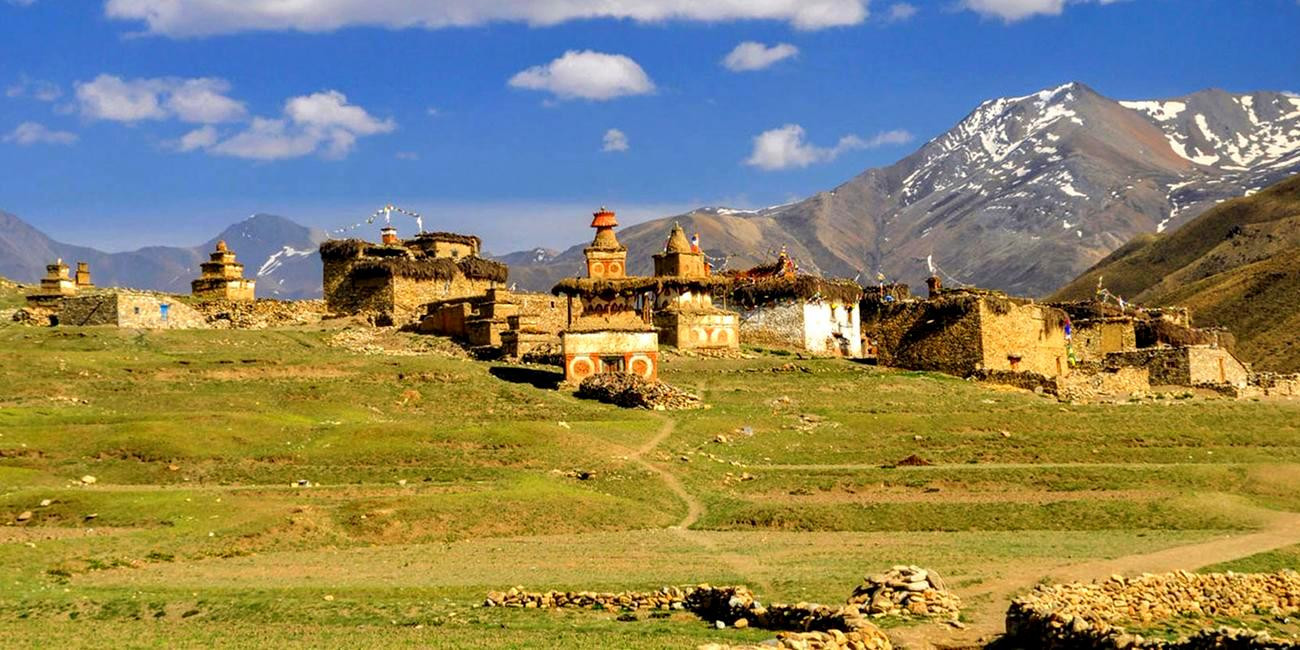
Key Features of the Dolpo Circuit Trek
-
Duration and Route: The trek typically spans about 18 to 24 days, starting from Juphal after a flight from Nepalgunj. It winds through lower Dolpo to upper Dolpo, covering significant sites like Phoksundo Lake, Shey Gompa, and crossing high passes such as the Saldang La.
-
Altitude: The trek reaches high-altitude points, including passes over 5,000 meters, such as the Nagdalo La (5,350 meters) and Shey La (5,000 meters). Proper acclimatization is essential to manage the risk of altitude sickness.
-
Physical Difficulty: Due to its length, high altitudes, and the rugged nature of the terrain, the Dolpo Circuit is considered challenging. It demands good physical fitness and previous trekking experience.
-
Best Time to Trek: The optimal seasons for trekking in Dolpo are during the spring (April to early June) and autumn (late September to early November). These periods generally offer clearer weather and more stable conditions, essential for crossing high passes.
-
Cultural Experience: Dolpo is a culturally Tibetan region, with ancient Buddhist monasteries like Shey Gompa, which is over 800 years old, and unique traditions preserved by its isolation. The trek offers a deep dive into the practices and daily lives of Dolpo's people.
-
Scenic Highlights: The trek features the stunning Phoksundo Lake, known for its mesmerizing turquoise waters, as well as rugged canyons and pristine, untouched landscapes. The region's flora and fauna are unique, with chances to spot rare wildlife such as the snow leopard.
What to Expect
-
Accommodation and Meals: Accommodations are basic and often involve camping, as teahouses are few and far between in many parts of Dolpo. This remoteness adds to the adventure but requires trekkers to be fully self-sufficient, carrying all necessary supplies.
-
Permits and Regulations: The Dolpo region requires several permits due to its status as a protected area. This includes a Restricted Area Permit (RAP), which is more expensive than standard trekking permits and must be arranged through a licensed trekking agency.
-
Guides and Porters: Due to the challenging nature of the terrain and the complexity of navigating the region, a knowledgeable guide and reliable porters are indispensable. They not only enhance safety but also enrich the trekking experience by sharing insights into local culture and nature.
-
Environmental and Cultural Sensitivity: Given the ecological and cultural sensitivity of Dolpo, trekkers are urged to respect local customs and minimize their environmental impact. This includes managing waste properly, respecting wildlife, and being considerate of cultural sites and practices.
The Dolpo Circuit Trek is ideal for adventurers who seek to explore one of the last truly remote Himalayan sanctuaries. It offers an intense and rewarding experience that goes far beyond typical trekking, providing a profound connection with nature and ancient Himalayan culture.
Makalu Base Camp Trek
The Makalu Base Camp Trek is an exhilarating adventure into one of the most remote and less frequented areas of the Himalayas, centered around Mount Makalu, the fifth highest mountain in the world. This trek is known for its splendid isolation and spectacular natural beauty, encompassing rugged terrain, lush rhododendron forests, and high-altitude landscapes.
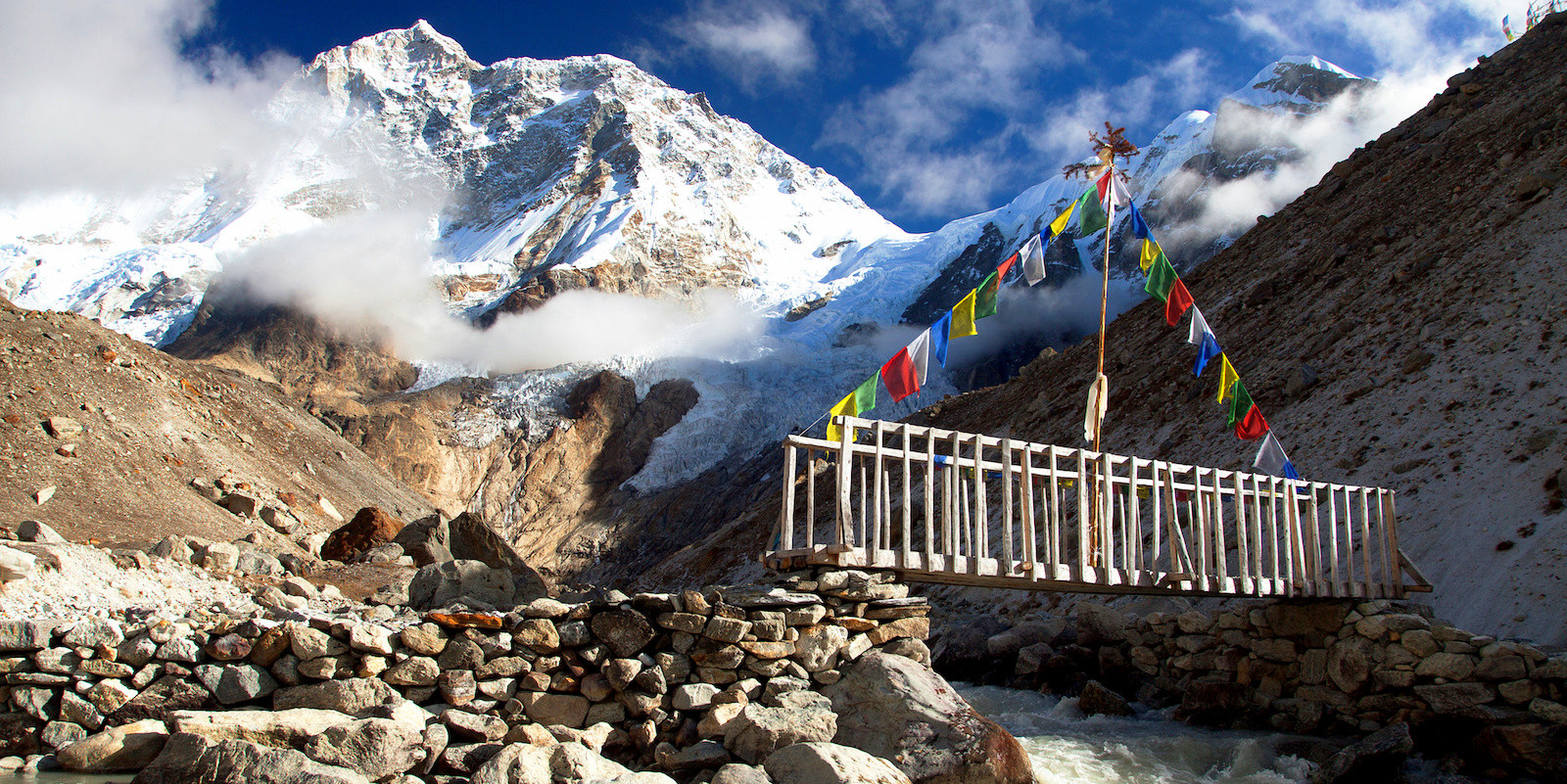
Key Features of the Makalu Base Camp Trek
-
Duration and Route: The trek typically takes about 16 to 22 days, starting with a flight from Kathmandu to Tumlingtar and then a drive to Num, the trek's starting point. The route progresses through the beautiful Arun Valley, ascending to the Makalu Base Camp and often returning via the same path.
-
Altitude: The trek reaches its highest point at Makalu Base Camp, located at 4,870 meters (15,978 feet). The high altitude demands careful acclimatization to avoid altitude sickness.
-
Physical Difficulty: This trek is considered challenging due to its remote location, the variability of the terrain, and the high altitudes involved. It is suitable for physically fit adventurers with some trekking experience.
-
Best Time to Trek: The best times for the Makalu Base Camp Trek are during the spring (March to May) and autumn (September to November). These seasons provide the most stable weather conditions and clear views.
-
Cultural Experience: The trek offers a glimpse into the lives of different ethnic groups living in the region, including Rai, Sherpa, and Tamang communities. Their warm hospitality is a highlight of the journey.
-
Scenic Highlights: The trek features an extraordinary range of biodiversity, including the Makalu Barun National Park and Conservation Area, which offers one of the richest varieties of flora and fauna in Nepal. Stunning views of Mount Makalu, Everest, Lhotse, and Baruntse are visible during the trek.
What to Expect
-
Accommodation and Meals: The Makalu Base Camp Trek is less developed in terms of teahouse infrastructure compared to other popular treks in Nepal. Accommodations are basic, and camping might be necessary for several nights, especially as trekkers approach the base camp.
-
Permits and Regulations: Trekkers need to obtain a Makalu Barun National Park permit and a TIMS (Trekkers’ Information Management System) card. Due to the protected nature of the area, it’s important to arrange these through a registered trekking agency.
-
Guides and Porters: Given the challenging nature and remoteness of the trek, having a knowledgeable guide and reliable porters is crucial. They not only ensure safety but also enhance the trekking experience by sharing valuable insights about the region’s geography and culture.
-
Environmental and Cultural Sensitivity: Trekking in such a pristine environment demands a high degree of environmental awareness. Trekkers are encouraged to adhere to leave-no-trace principles, respect local customs, and minimize their impact on the natural and cultural surroundings.
The Makalu Base Camp Trek offers an authentic adventure for those looking to explore one of the Himalayas' hidden gems. With its stunning landscapes, diverse ecosystems, and the challenge of reaching one of the highest base camps in the world, this trek is a rewarding experience for those who undertake it.
Rara Lake Trek
The Rara Lake Trek offers a serene and picturesque journey to the largest lake in Nepal, Rara Lake, located in the remote northwest in the Rara National Park. This trek is distinguished by its stunning alpine scenery, relatively easy trails, and the tranquility of being away from the more commercial trekking routes.
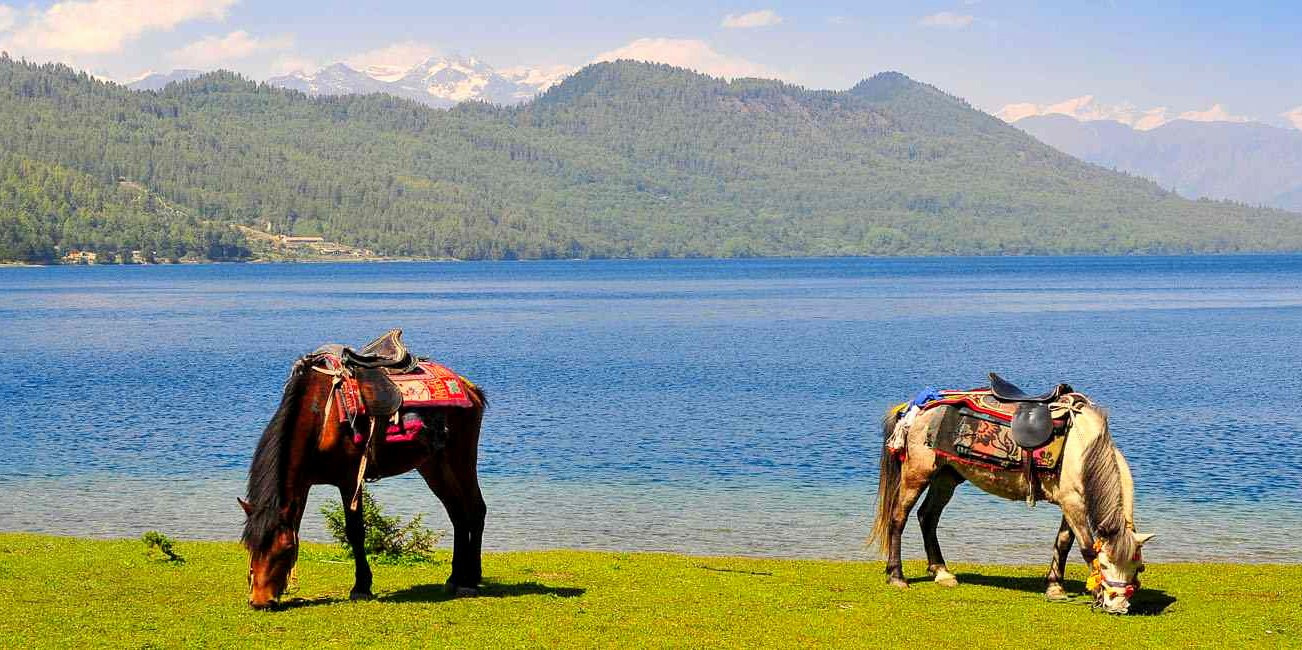
Key Features of the Rara Lake Trek
-
Duration and Route: The trek usually takes about 7 to 10 days, starting with a flight from Kathmandu to Nepalgunj and then to Jumla, from where the actual trekking begins. The traditional route passes through beautiful forests and remote villages before arriving at the pristine Rara Lake.
-
Altitude: Rara Lake is situated at an altitude of about 2,990 meters (9,810 feet), making this trek less demanding in terms of altitude sickness compared to other high-altitude treks in Nepal.
-
Physical Difficulty: This trek is considered moderate, suitable for trekkers of most fitness levels. The trails are not as steep or challenging as those found on higher mountain treks.
-
Best Time to Trek: The best times to visit are during spring (April to June) and autumn (September to November). These months feature stable weather, clear skies, and the best views of the lake and surrounding mountains.
-
Cultural Experience: The trek provides insights into the rural lifestyles of the region’s ethnic groups, such as the Thakuris and Tibetans. The area is less influenced by tourism, offering a more authentic glimpse into Nepalese rural life.
-
Scenic Highlights: The main attraction is Rara Lake itself, known for its stunning turquoise waters and the dramatic forested hills that surround it. The area is also rich in biodiversity, including a variety of birds and wildlife, making it a great spot for nature enthusiasts.
What to Expect
-
Accommodation and Meals: Options for accommodation along the Rara Lake Trek are basic, with local guesthouses and homestays providing simple rooms and traditional Nepali meals. The remote nature of this trek means facilities are less developed, but the hospitality is warm and welcoming.
-
Permits and Regulations: Trekkers need to obtain a permit for the Rara National Park, which can be arranged through a trekking agency or at the Department of National Parks and Wildlife Conservation in Kathmandu.
-
Guides and Porters: While the trail is not technically demanding, hiring a guide can enhance the experience through cultural insights and information about the natural environment. Porters can also be hired to help with carrying luggage.
-
Environmental and Cultural Sensitivity: As Rara Lake is within a national park, it is crucial to follow strict environmental guidelines to preserve the area's natural beauty. This includes packing out all non-biodegradable materials and respecting the local wildlife and habitats.
The Rara Lake Trek is an excellent choice for those looking to experience the beauty of Nepal's lakes and landscapes without the strenuous challenges of high-altitude trekking. Its combination of natural beauty, cultural richness, and relative ease makes it a unique and rewarding adventure in one of Nepal's most pristine national parks.
Mardi Himal Trek
The Mardi Himal Trek is a hidden gem in the Annapurna region, offering a quieter alternative to the more crowded treks like the Annapurna Base Camp and Poon Hill. This trek is gaining popularity for its stunning views of the Annapurna ranges and its relatively short trekking duration, making it ideal for those with limited time who still want to experience the majesty of the Himalayas up close.
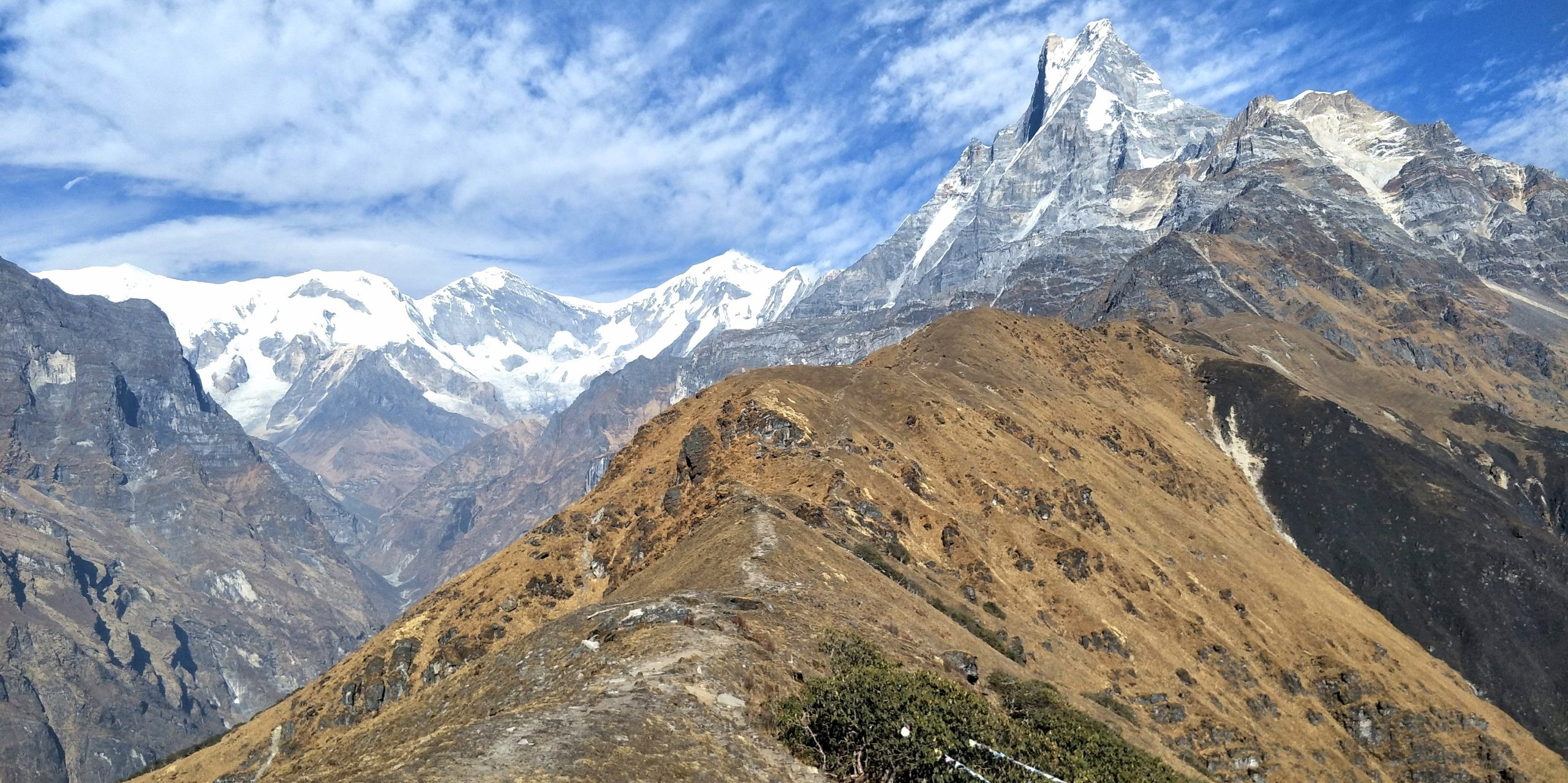
Key Features of the Mardi Himal Trek
-
Duration and Route: The trek can be completed in 5 to 7 days, starting from Pokhara with a short drive to Kande, which is the trek's starting point. The trail winds through rhododendron forests, alpine meadows, and finally to the Mardi Himal Base Camp. The route provides spectacular close-up views of Mardi Himal, Machapuchare (Fishtail Mountain), Annapurna South, and Hiunchuli.
-
Altitude: The highest point of the trek is Mardi Himal Base Camp, which is located at an altitude of 4,500 meters (14,763 feet). The high vantage point offers panoramic views and a distinct sense of being among the high peaks.
-
Physical Difficulty: This trek is considered moderate. It involves some steep climbs and rugged paths but is generally less demanding than longer high-altitude treks. Proper acclimatization is still necessary to handle the elevation safely.
-
Best Time to Trek: The best times to undertake the Mardi Himal Trek are during the spring (March to May) and autumn (September to November). These seasons offer the clearest skies and most temperate weather, providing the best conditions for trekking and photography.
-
Cultural Experience: While the Mardi Himal Trek does not pass through as many villages as other treks in the region, it still offers opportunities to experience the local culture, particularly at the beginning and end of the trek in the lower villages.
-
Scenic Highlights: The trek is renowned for its breathtaking views of the Annapurna range, including a unique perspective on Machapuchare, which is revered and considered sacred by the local population. The journey through vibrant rhododendron forests, especially stunning when in bloom, adds to the trek's appeal.
What to Expect
-
Accommodation and Meals: Recently developed teahouses along the route provide basic but comfortable accommodation and meals. The facilities are simpler compared to those on more established trekking routes but are adequate for the needs of most trekkers.
-
Permits and Regulations: A TIMS (Trekkers' Information Management System) card and an Annapurna Conservation Area Permit (ACAP) are required for this trek. These can be easily obtained in Pokhara or Kathmandu through trekking agencies or the tourism board.
-
Guides and Porters: While the trail is marked and can be navigated independently, hiring a guide can enhance the experience by providing insights into the local flora, fauna, and geography. Porters can be hired to ease the physical burden of carrying gear.
-
Environmental and Cultural Sensitivity: Trekkers are encouraged to respect the natural environment and the local customs they encounter along the way. This includes managing waste properly, staying on established trails, and interacting respectfully with local communities.
The Mardi Himal Trek offers a remarkable adventure into the heart of the Himalayas, perfect for those looking for a shorter trek that still offers the high-altitude experience and spectacular mountain views typical of Nepal.
Gokyo Ri Trek
The Gokyo Ri Trek is an exceptional alternative to the more frequently traveled Everest Base Camp Trek, offering trekkers stunning views of Everest and other high peaks from a unique vantage point. This trek revolves around the Gokyo Valley and its series of glacial lakes, providing a blend of natural beauty and less crowded paths, making it a favorite among those seeking a more tranquil Himalayan experience.
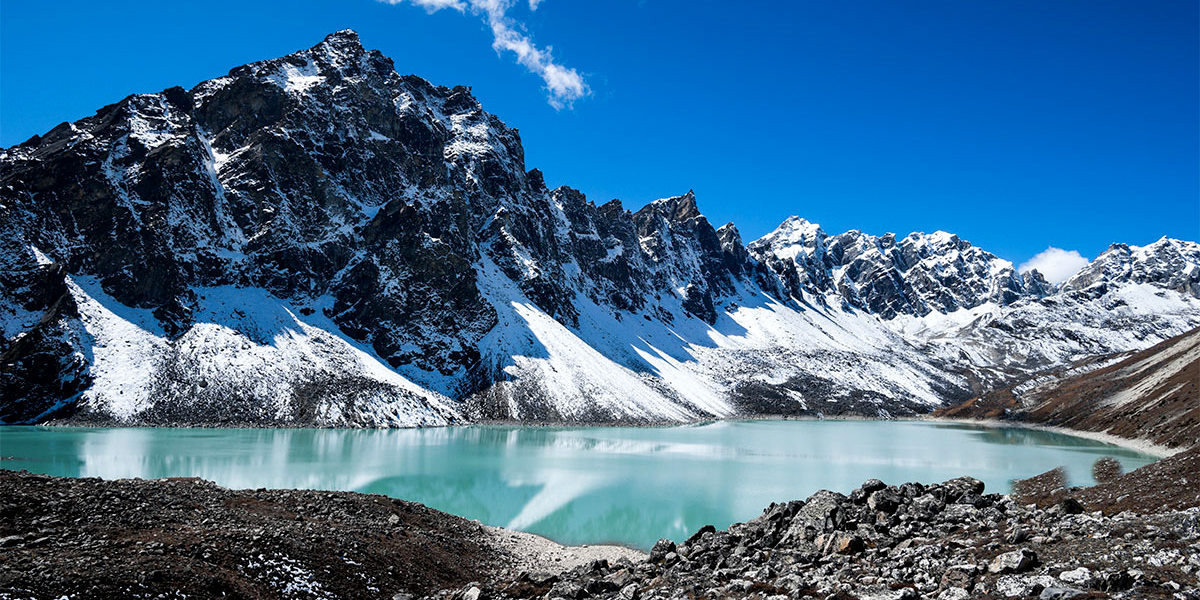
Key Features of the Gokyo Ri Trek
-
Duration and Route: Typically, the trek takes about 12 to 15 days, starting with a flight from Kathmandu to Lukla. From there, the route diverges from the classic Everest Base Camp trail at Namche Bazaar, heading towards the Gokyo Valley. Trekkers climb Gokyo Ri (5,357 meters or 17,575 feet) and often include a visit to the Fourth and Fifth Gokyo Lakes.
-
Altitude: Gokyo Ri itself is the highest point on the trek, offering panoramic views of Everest, Lhotse, Makalu, and Cho Oyu. The altitude requires careful acclimatization to manage the risk of altitude sickness effectively.
-
Physical Difficulty: The trek is considered moderate to challenging, primarily due to the high altitude and the length of the trek. The paths are well-trodden and less arduous than those of some other high-altitude treks but still require a good level of fitness.
-
Best Time to Trek: The ideal seasons for the Gokyo Ri Trek are during the spring (March to May) and autumn (September to November). These months offer the most stable weather conditions and the clearest views.
-
Cultural Experience: While the trek is more focused on landscapes than cultural immersion, trekkers will still encounter Sherpa communities in the lower reaches and experience the hospitality and culture of the Khumbu region.
-
Scenic Highlights: The trek is famed for its spectacular scenery, including the serene, turquoise Gokyo Lakes, the Ngozumpa Glacier (one of the largest in the Himalayas), and the superb summit view from Gokyo Ri, which many consider superior even to that from Kala Patthar on the Everest Base Camp route.
What to Expect
-
Accommodation and Meals: Accommodation is provided in teahouses along the route, which are basic but comfortable, offering meals suitable for trekking energy needs. Facilities are generally good, given the popularity of the region, although less so than on the main EBC trail.
-
Permits and Regulations: A TIMS (Trekkers' Information Management System) card and a Sagarmatha National Park permit are required for this trek. These permits can be arranged through trekking agencies or at the tourism board offices in Kathmandu and Pokhara.
-
Guides and Porters: Hiring a guide is advisable for navigating new trails and to enhance safety, especially given the remote nature and potential weather changes. Porters can be hired to help with carrying luggage, which allows trekkers to enjoy the scenery without the burden of heavy packs.
-
Environmental and Cultural Sensitivity: Given the ecological sensitivity of the Himalayan region, it is crucial to minimize your environmental impact. This includes packing out all garbage, using water resources wisely, and respecting local customs and wildlife habitats.
The Gokyo Ri Trek provides a breathtaking experience for those interested in exploring high-altitude lakes and enjoying some of the best panoramic mountain views in the Everest region. Its relative solitude compared to the Everest Base Camp trek makes it an excellent choice for those looking to immerse themselves in the natural beauty of the Himalayas without the crowds.
Tips for Top 10 Longest Treks in Nepal
Trekking in Nepal is a dream for many adventurers worldwide, offering some of the most spectacular landscapes and cultural experiences. Here are essential tips for tackling the top 10 longest treks in Nepal, ensuring a safe, enjoyable, and memorable journey:
-
Acclimatize Properly: High altitude sickness can affect anyone, regardless of fitness. Plan your itinerary to allow gradual acclimatization, especially for treks that go above 4,000 meters, like Everest Base Camp, Annapurna Circuit, and Gokyo Ri.
-
Hire a Guide and/or Porter: Local guides enhance your trekking experience with insights into the local culture, flora, and fauna, and ensure you follow the safest and most scenic routes. Porters can alleviate the physical strain of carrying your gear.
-
Get the Necessary Permits: Most treks in Nepal require permits such as the TIMS card, Annapurna Conservation Area Permit, or specific restricted area permits for regions like Upper Mustang or Manaslu. Arrange these through a trekking agency or the Nepal Tourism Board.
-
Pack Smart: The right gear is crucial. Essentials include sturdy trekking boots, layers of clothing to accommodate varying temperatures, a waterproof jacket, a sleeping bag, a hat, sunglasses, and sunscreen. Also, pack a first aid kit with medications for altitude sickness, diarrhea, and minor injuries.
-
Stay Hydrated: Drink plenty of water throughout your trek. Water purification tablets or a water filter will help you access safe drinking water without relying on bottled water, reducing plastic waste.
-
Respect Local Customs: Nepal’s diverse cultures come with varying traditions and norms. Dress conservatively, ask permission before taking photos of people, and show respect at religious sites.
-
Train Before You Go: These treks are not light endeavors. Engage in physical training months before your trek; focus on cardiovascular fitness, strength training, and long-distance walks with a weighted backpack.
-
Plan Financially: Ensure you have enough cash as ATM access may be limited or nonexistent beyond larger towns like Namche Bazaar. Include funds for tips for guides and porters, as this is an important aspect of their compensation.
-
Choose the Right Season: The best times to trek in Nepal are during the pre-monsoon spring months of March to May and the post-monsoon autumn months of September to November. These periods typically offer clear weather and optimal trekking conditions.
-
Be Environmentally Conscious: Leave no trace. Carry all your rubbish out, avoid plastic, and use biodegradable products where possible. The environmental impact of trekking can be significant, and it’s important to minimize it.
-
Stay Safe: Listen to your body and guide. If you feel sick, descend to a lower altitude and seek medical help if symptoms persist. Always let someone know your plans and expected return times.
-
Be Flexible: Mountain weather can be unpredictable. Be prepared for itinerary changes due to weather conditions, health issues, or logistical challenges.
Following these tips will help ensure that your trek in Nepal is not only an adventure of a lifetime but also safe, respectful to the local environment and communities, and more enjoyable. Happy trekking!
Ideal Time for Top 10 Longest Treks in Nepal
Selecting the ideal time for trekking in Nepal is crucial for ensuring the best possible experience, with favorable weather and clear views. Most of the top 10 longest treks in Nepal are best undertaken during the country's two main trekking seasons: pre-monsoon (spring) and post-monsoon (autumn). Here’s a breakdown of what to expect in each season for these treks:
Pre-Monsoon (Spring: March to May)
-
Weather: This season offers warm weather and progressively clearer skies as winter's snow melts. The temperature is comfortable for trekking, although it can still be quite cold at higher altitudes.
-
Advantages: Spring is renowned for beautiful rhododendron blooms, especially visible on treks like the Annapurna Circuit and Ghorepani Poon Hill. It's also a great time for wildlife spotting as animals emerge after the winter.
-
Visibility: As the season progresses, the air quality improves, and the dust settles, leading to better views of the mountains.
Post-Monsoon (Autumn: September to November)
-
Weather: Autumn is generally considered the best trekking season in Nepal due to stable weather and moderate temperatures. The monsoon rain clears the air of dust, making the skies exceptionally clear.
-
Advantages: This season offers the clearest views of the Himalayas, making it ideal for high-altitude treks like Everest Base Camp, Manaslu Circuit, and Gokyo Ri. The weather is reliably dry, which is crucial for crossing high passes safely.
-
Cultural Festivals: Autumn coincides with many of Nepal’s major festivals, such as Dashain and Tihar, providing trekkers with a unique cultural experience in addition to their trekking adventure.
Off-Season Trekking
-
Monsoon (June to August): Trekking during the monsoon is generally not recommended due to heavy rains, leeches, slippery trails, and obscured mountain views. However, some regions like Upper Mustang and Dolpo fall in the rain shadow area and are viable options during this time as they receive significantly less rainfall.
-
Winter (December to February): Winter trekking can be rewarding for those prepared to handle the cold. The trails are less crowded, and the views can be spectacular on clear days. However, high-altitude treks may be more challenging due to snow and colder temperatures, which can affect accessibility and comfort.
Choosing the right time for your trek not only enhances the experience but also ensures your safety and comfort. Each trek has its unique aspects influenced by the season, so considering these factors will help you select the best period for your adventure in Nepal.
Nepal's top 10 longest treks offer a diverse array of experiences, suitable for both seasoned adventurers and those new to high-altitude trekking. From the iconic Everest Base Camp to the remote Upper Mustang, these treks provide stunning natural landscapes and rich cultural encounters. Each route offers its own unique challenges and rewards, promising unforgettable adventures and panoramic vistas of the Himalayas. Adequate preparation and choosing the right season are key to enjoying these spectacular journeys and ensuring a safe and rewarding trekking experience in Nepal.
FAQs for Top 10 Longest Treks in Nepal
Q: What is the best time to trek in Nepal?
A: The optimal trekking seasons are during the pre-monsoon spring (March to May) and post-monsoon autumn (September to November) for stable weather and clear mountain views.
Q: Do I need a guide for trekking in Nepal?
A: While not mandatory for all treks, hiring a guide is recommended for safety, navigation, and gaining insights into local culture, especially on longer and more remote trails.
Q: Are permits required for trekking in Nepal?
A: Yes, trekkers need to obtain permits such as the TIMS card, national park entry permits, and special permits for restricted areas, which can be arranged through trekking agencies or at the Nepal Tourism Board office.
Q: How can I prevent altitude sickness?
A: Prevent altitude sickness by acclimatizing properly with gradual ascents, staying hydrated, eating well, avoiding alcohol, and considering preventive medication upon advice from a healthcare professional.
Q: What should I pack for a trek in Nepal?
A: Essential items include layered clothing, a high-quality sleeping bag, trekking boots, first-aid kit, water purification means, sunscreen, sunglasses, and a hat, along with navigation tools like a map or GPS device.
Q: Can I trek in Nepal without previous trekking experience?
A: Beginners can undertake easier treks like the Poon Hill trek; however, longer and challenging treks require good physical fitness and some trekking experience for safety.
Q: What is the accommodation like on the treks?
A: Accommodation ranges from basic teahouses with simple rooms and communal dining to camping in remote areas. Comfort levels vary with the trek's remoteness.
Q: How much does it cost to trek in Nepal?
A: The cost varies based on trek length, whether you hire guides/porters, accommodation type, and daily expenses. Remote treks or those requiring special permits may cost more.
For the Nepal tour, please click here.
If you are looking for different kinds of Nepal Tours or Trekking Packages, feel free to contact us.
